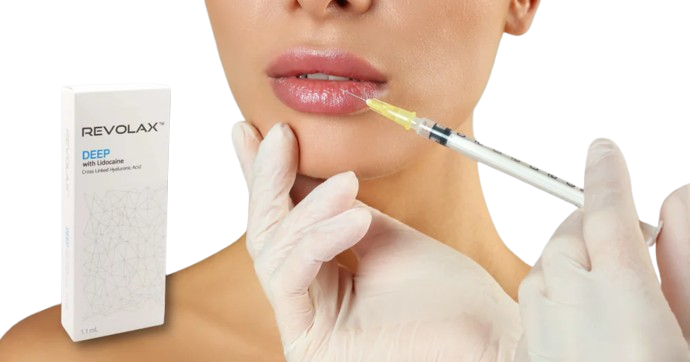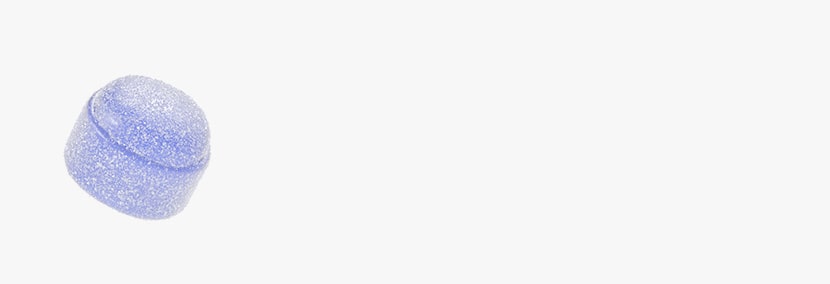Dysport
How Long Does It Take Dysport to Work?
Sep 13, 2025
Not all wrinkles are created the same. Some form naturally with age, while othersare caused by the repeated movements we make every day — smiling, frowning, squinting. These are known as dynamic wrinkles, and they’re often the first to show up in areas like the forehead, between the brows, and around the eyes.
For people looking to soften these lines without surgery, Dysport® has become a trusted option. Like other botulinum toxin type A treatments, it works by temporarily relaxing the muscles that cause creasing in the skin. But what sets Dysport apart is its reputation for working quickly — in some cases, visible results can appear in just 2 to 3 days.
In this article, we’ll break down how Dysport works, what affects how fast it kicks in, and what kind of timeline you can expect from treatment. Whether you’re new to injectables or considering switching products, this guide will help you make informed, confident decisions.
Key Takeaways
- Dysport is a neuromodulator that temporarily relaxes facial muscles to smooth dynamic wrinkles.
- Visible improvements often begin within 2 to 3 days, with full results appearing by 10 to 14 days.
- Dysport may act faster than Botox or Xeomin for some patients, thanks to its formulation and diffusion profile.
- Factors like injection technique, metabolism, and muscle size can influence onset time.
- Results typically last 3 to 4 months, and a follow-up appointment around two weeks can help fine-tune outcomes.
- Common side effects are mild and temporary, including swelling or bruising at the injection site.
About: Trusted by over 2,000+ global clients since 2014, Maylips has become a leading supplier of cosmetic, skincare, and orthopedic products for medical and aesthetic professionals. Maylips offers a wide range of authentic brand-name products at competitive wholesale prices, sourced from around the world. If you’re looking to buy Dysport online, contact our sales team for guidance.
Typical Timeline for Visible Results with Dysport
Dysport (abobotulinumtoxinA) is a type of neuromodulator that helps soften dynamic wrinkles, which are the lines that form from repeated facial expressions like frowning, smiling, or squinting. By temporarily relaxing the targeted muscles, Dysport allows the overlying skin to smooth out, creating a more refreshed appearance.


Many patients begin to notice subtle changes within 24 to 48 hours after injection, particularly in areas like the forehead, around the eyes, and between the brows. These improvements continue to build over time, with full results typically visible within 7 to 14 days.
Compared to some other injectables, Dysport may work a little faster, which can be a plus for patients preparing for a special event or photos. Most reach peak results by the second or third week, and outcomes often last about three to four months, though some may enjoy results for up to six months depending on factors like dosage, muscle activity, and the provider’s technique.
A follow-up visit is usually recommended around two weeks post-treatment to review results and determine if any small adjustments are needed for optimal balance and symmetry.
Pharmacological Factors Behind Dysport’s Faster Onset
One reason Dysport is known for its quicker effect is its unique formulation. It’s thought to have a smaller molecular size and higher diffusion rate compared to other botulinum toxin products. This allows it to spread efficiently into the target muscle group and begin taking effect sooner.
Like all botulinum toxin type A products, Dysport works by blocking the release of acetylcholine, a chemical messenger that tells muscles to contract. By temporarily interrupting this signal, Dysport helps muscles relax—and over the next few days, this leads to visible softening of wrinkles caused by repeated facial movement.
This pharmacological profile helps explain why many patients notice a faster onset of results with Dysport compared to other treatments.
Several Factors that Influence the Speed of Dysport Onset
The speed at which Dysport takes effect isn’t the same for everyone. A few key factors influence how quickly a patient sees results:
- Formulation Differences: Dysport’s structure and protein makeup affect how it spreads and is absorbed by muscle tissue.
- Individual Metabolism: Some patients naturally process the medication faster or slower than others, affecting the onset time.
- Injection Technique and Dosage: The location and amount injected can directly impact both the speed of results and their duration.
When combined, these elements give Dysport its reputation for working quickly, especially when compared with other neuromodulators.
Comparing Onset: Dysport vs Botox vs Xeomin
Patients considering wrinkle-reducing treatments often ask how long it takes each product to work. Though Dysport, Botox, and Xeomin are all botulinum toxin type A injectables, they differ slightly in how soon results become visible.
- Dysport: Often praised for its faster onset, Dysport can start showing improvements within 2 to 3 days. Full effects typically appear by day 10 to 14.
- Botox: One of the most widely used neuromodulators, it begins working within 3 to 5 days, with final results seen around the two-week mark.
- Xeomin: Similar to Botox, Xeomin also has a 3 to 5 day onset, with results developing by week two. Its purified formulation, free of accessory proteins, may appeal to patients concerned about long-term antibody development.
Although onset speed varies slightly, all three treatments offer similar durations of effect—usually 3 to 4 months. When deciding between Dysport vs Xeomin, or even Botox, the best choice depends on your goals, treatment history, and your provider’s recommendation.
Clinical Guidance for Counseling Patients on Dysport Expectations
A big part of successful treatment comes down to setting realistic expectations. Even though Dysport tends to work faster than other options, visible improvements aren’t immediate, and results can vary from person to person.


Here are key points providers often share during the consultation:
- Initial Results: Most patients notice visible changes in 2 to 3 days, but full results may take up to 14 days.
- Variable Timeline: Things like muscle size, treatment area, and individual response can affect how soon results show and how dramatic they appear.
- Touch-Up Appointments: Minor asymmetry or lingering wrinkles may require a quick follow-up visit two weeks after the initial treatment.
- Temporary Side Effects: Some patients experience mild bruising, tenderness, or swelling, but these effects are usually short-lived.
- Aftercare Tips: For best results, patients should avoid rubbing the area, strenuous activity, or lying flat for several hours post-treatment.
Being open about what Dysport can—and can’t—do helps patients feel confident, prepared, and more satisfied with their results.
Conclusion
Dysport is a reliable option for those seeking smoother, younger-looking skin—and it’s known for delivering results faster than many other wrinkle-relaxing injectables. Patients often see improvements in as little as 2 to 3 days, with full results typically visible by day 10 to 14.
Thanks to its formulation and diffusion characteristics, Dysport may kick in a bit sooner than Botox or Xeomin. But even with a faster onset, the outcome still depends on proper technique, accurate dosing, and good aftercare.
For patients looking for a balance of efficiency and effectiveness, Dysport remains a top choice—especially when guided by a skilled provider who can tailor the treatment to their needs.
FAQs
1. How long does it take Dysport to work?
Most patients begin seeing results within 2 to 3 days, with full effects developing by 10 to 14 days.
2. How does Dysport compare to Botox in onset?
Dysport may work slightly faster than Botox, though both typically reach their full effect around two weeks.
3. How long do Dysport results last?
Results generally last 3 to 4 months, though some may see effects lasting up to six months.
4. What factors affect how fast Dysport works?
Metabolism, injection site, muscle activity, and dosage can all influence onset and effectiveness.
5. Can Dysport work the same day of injection?
No. While some patients see early softening within a day or two, visible results usually take 48 to 72 hours.
6. Is Dysport safe?
Yes. When administered by trained professionals, Dysport is safe and FDA-approved, with side effects like swelling or bruising typically resolving quickly.
7. Can I combine Dysport with other treatments?
Yes. Dysport is often combined with dermal fillers, chemical peels, or medical-grade skincare for enhanced results—just be sure to consult your provider.
Talk with our sales representative.
Book a Meeting
References
Hillebrand GG, Liang Z, Yan X, Yoshii T. New wrinkles on wrinkling: an 8-year longitudinal study on the progression of expression lines into persistent wrinkles. British Journal of Dermatology. 2010;162(6):1233-1241. doi:10.1111/j.1365-2133.2010.09709.x
Wilson AJ, Chang B, Taglienti AJ, et al. A Quantitative Analysis of OnabotulinumtoxinA, AbobotulinumtoxinA, and IncobotulinumtoxinA: A Randomized, Double-Blind, Prospective Clinical Trial of Comparative Dynamic Strain Reduction. Plast Reconstr Surg. 2016;137(5):1424-1433. doi:10.1097/PRS.0000000000002076
Truong D, Brodsky M, Lew M, et al. Long-term efficacy and safety of botulinum toxin type A (Dysport) in cervical dystonia. Parkinsonism & Related Disorders. 2010;16(5):316-323. doi:10.1016/j.parkreldis.2010.03.002





